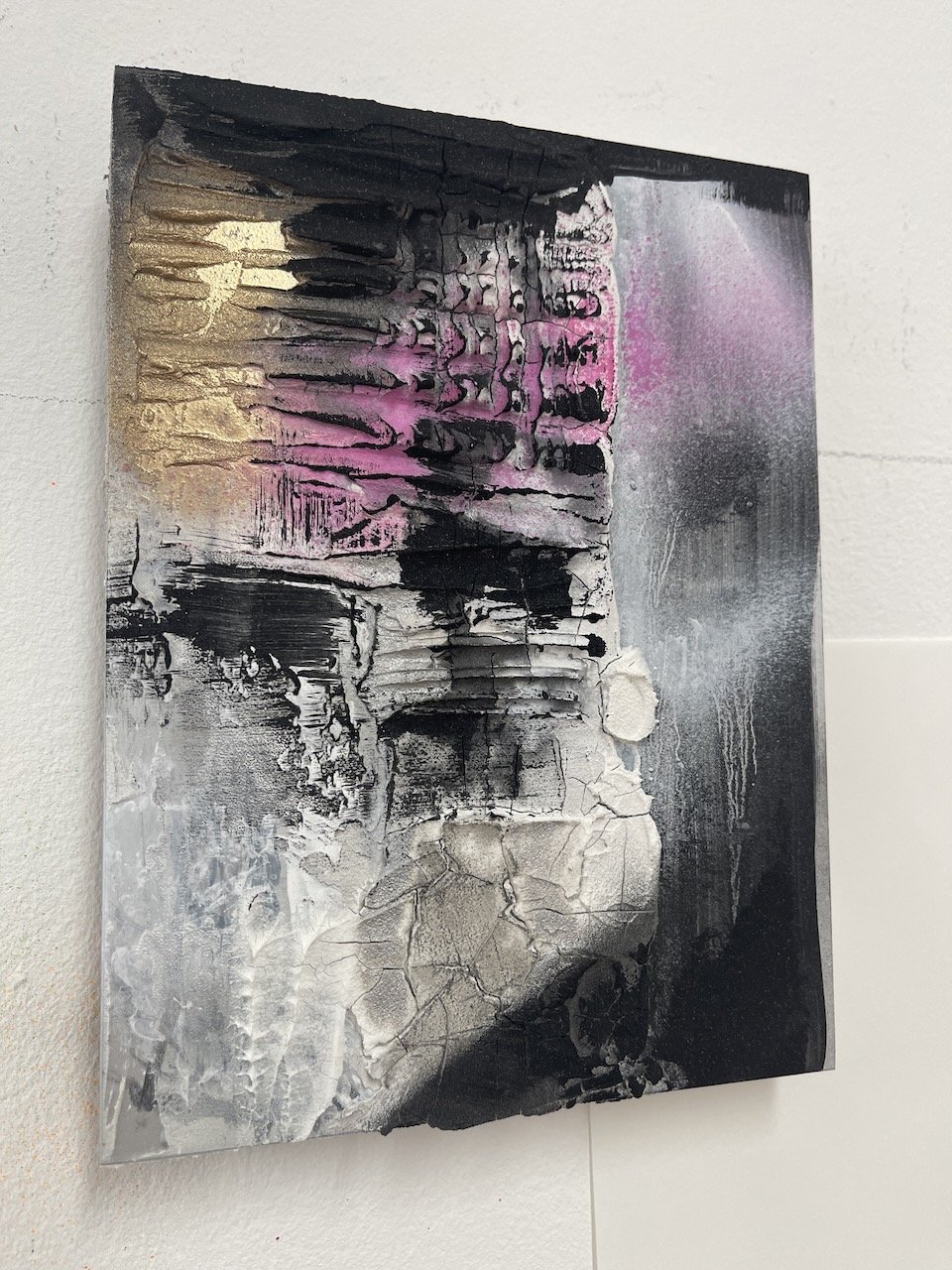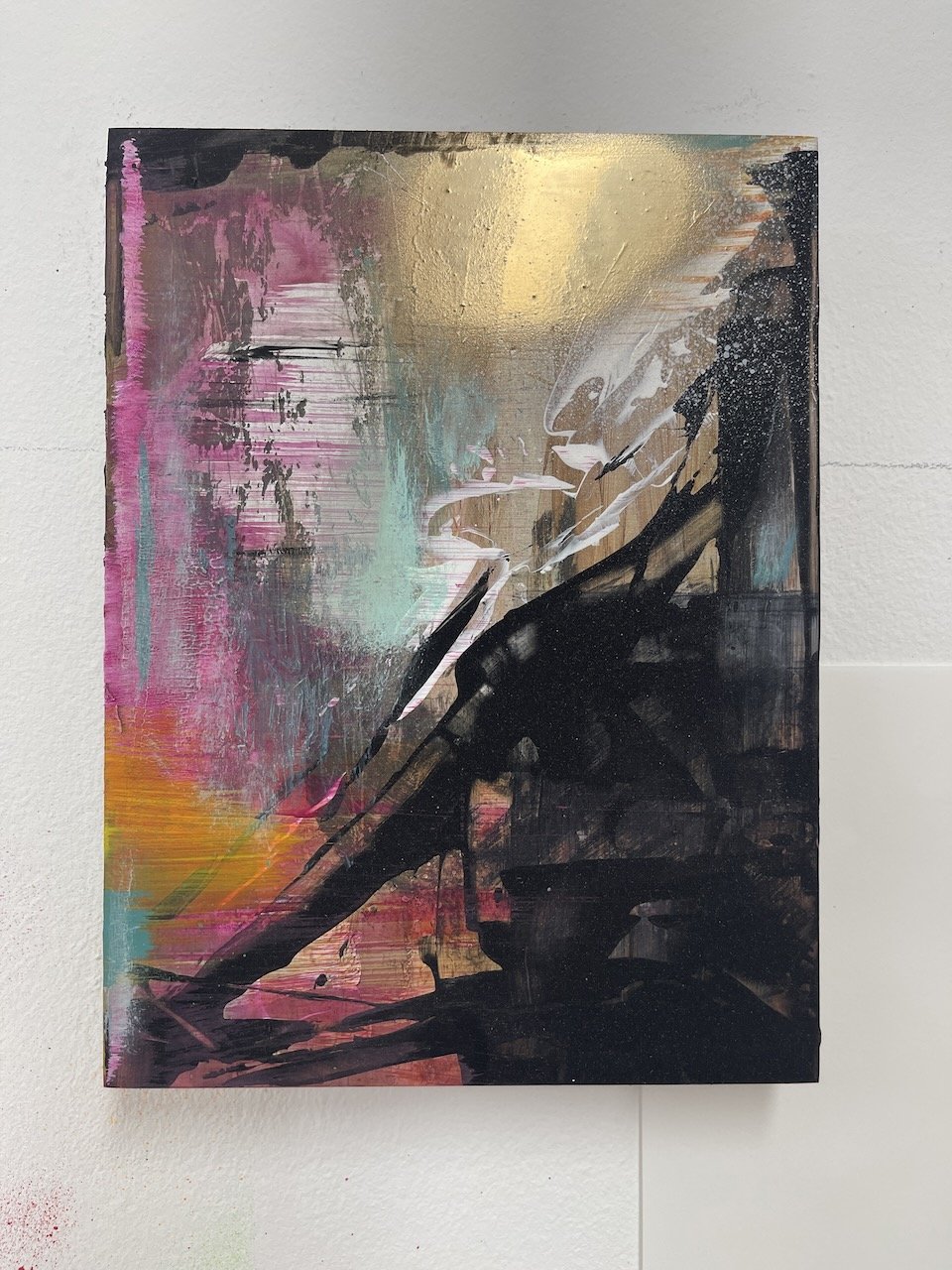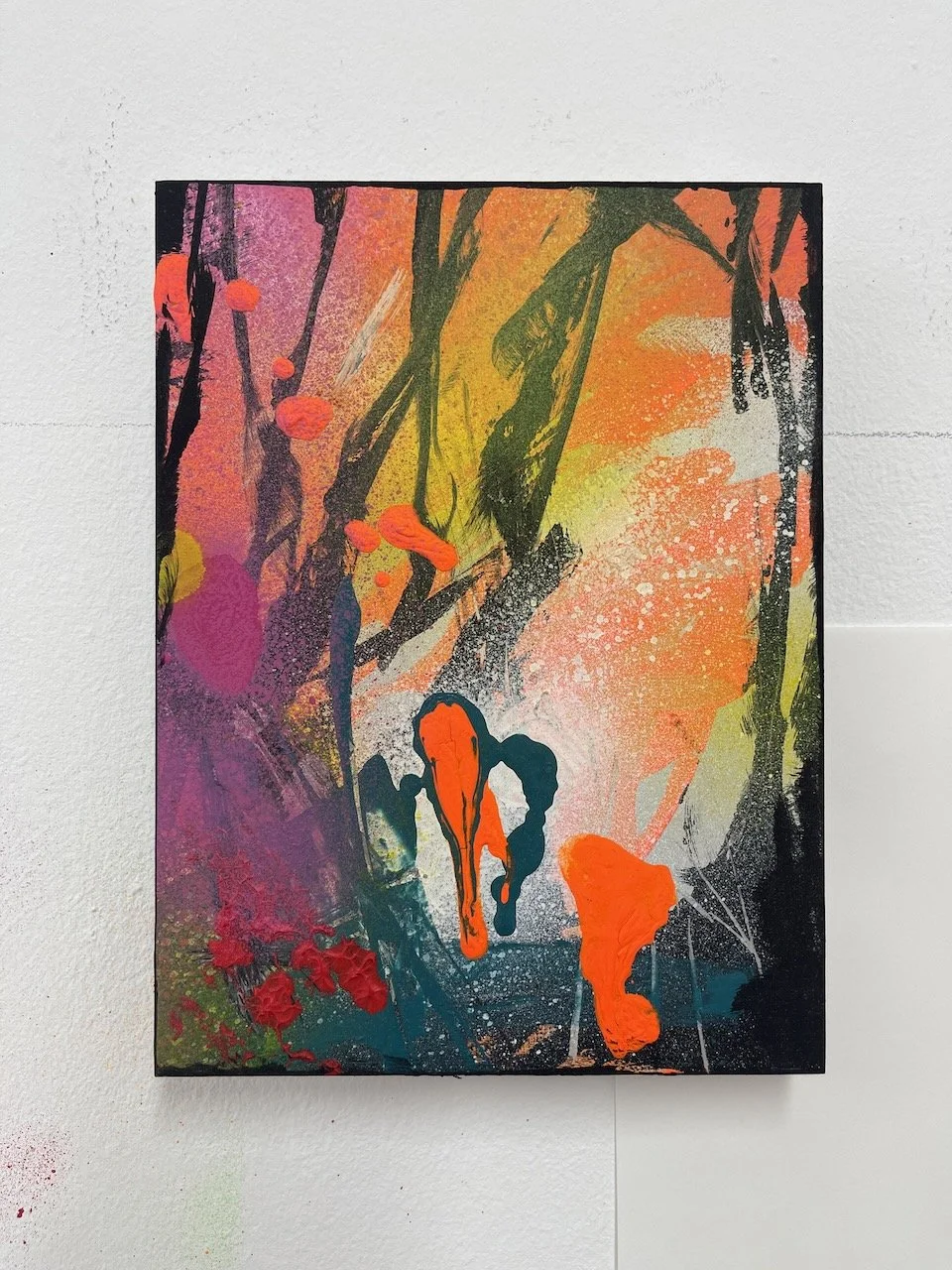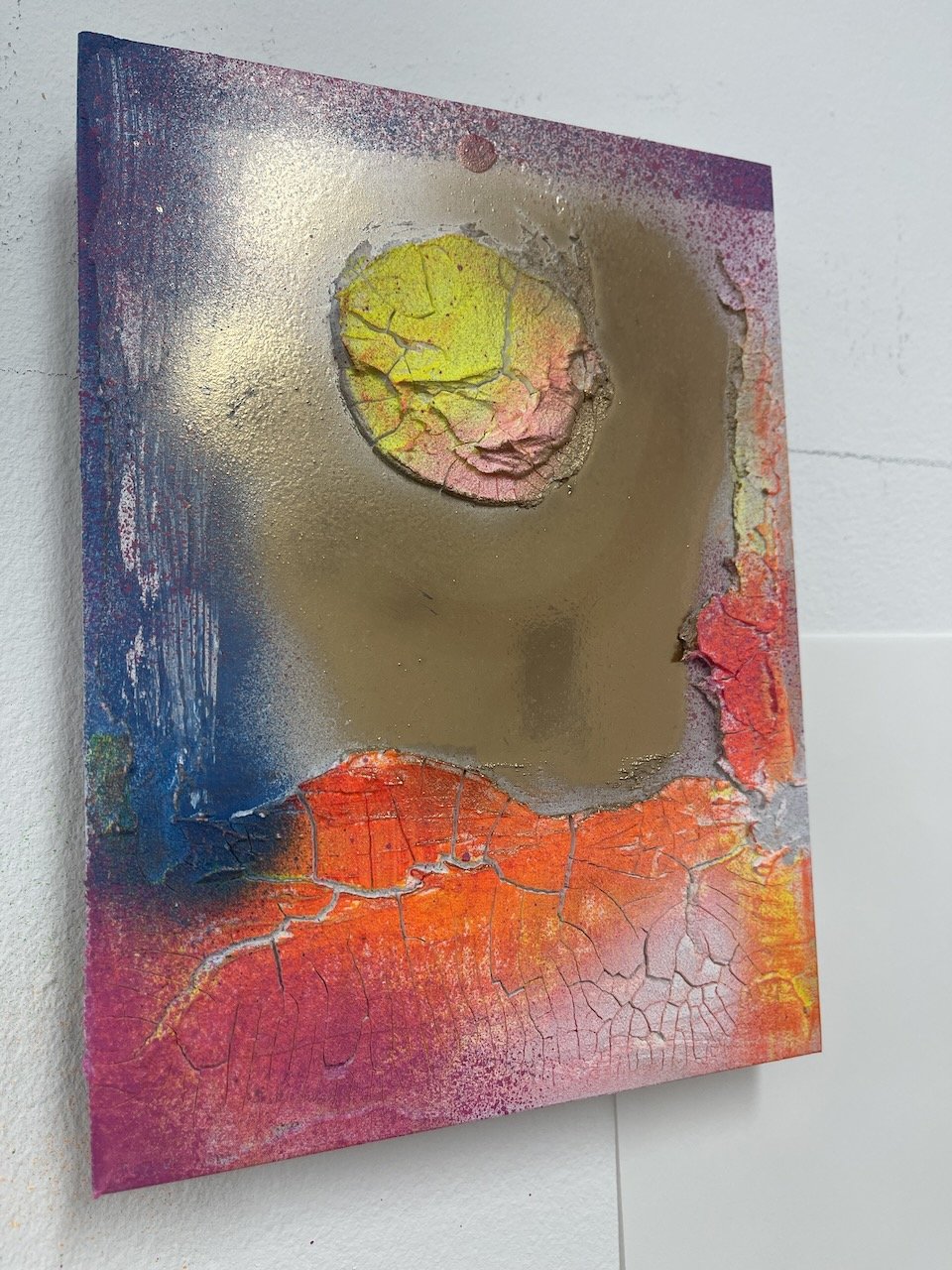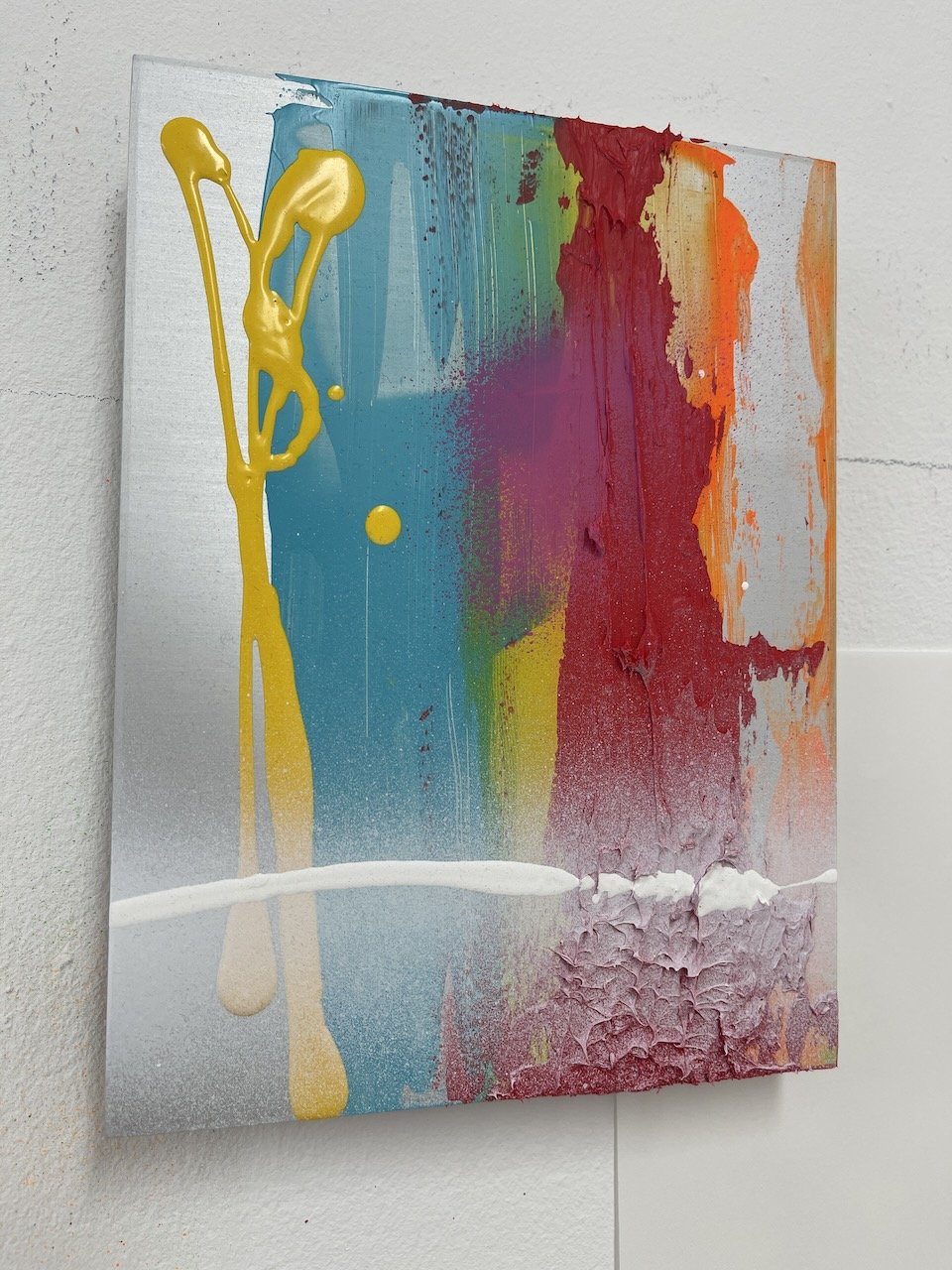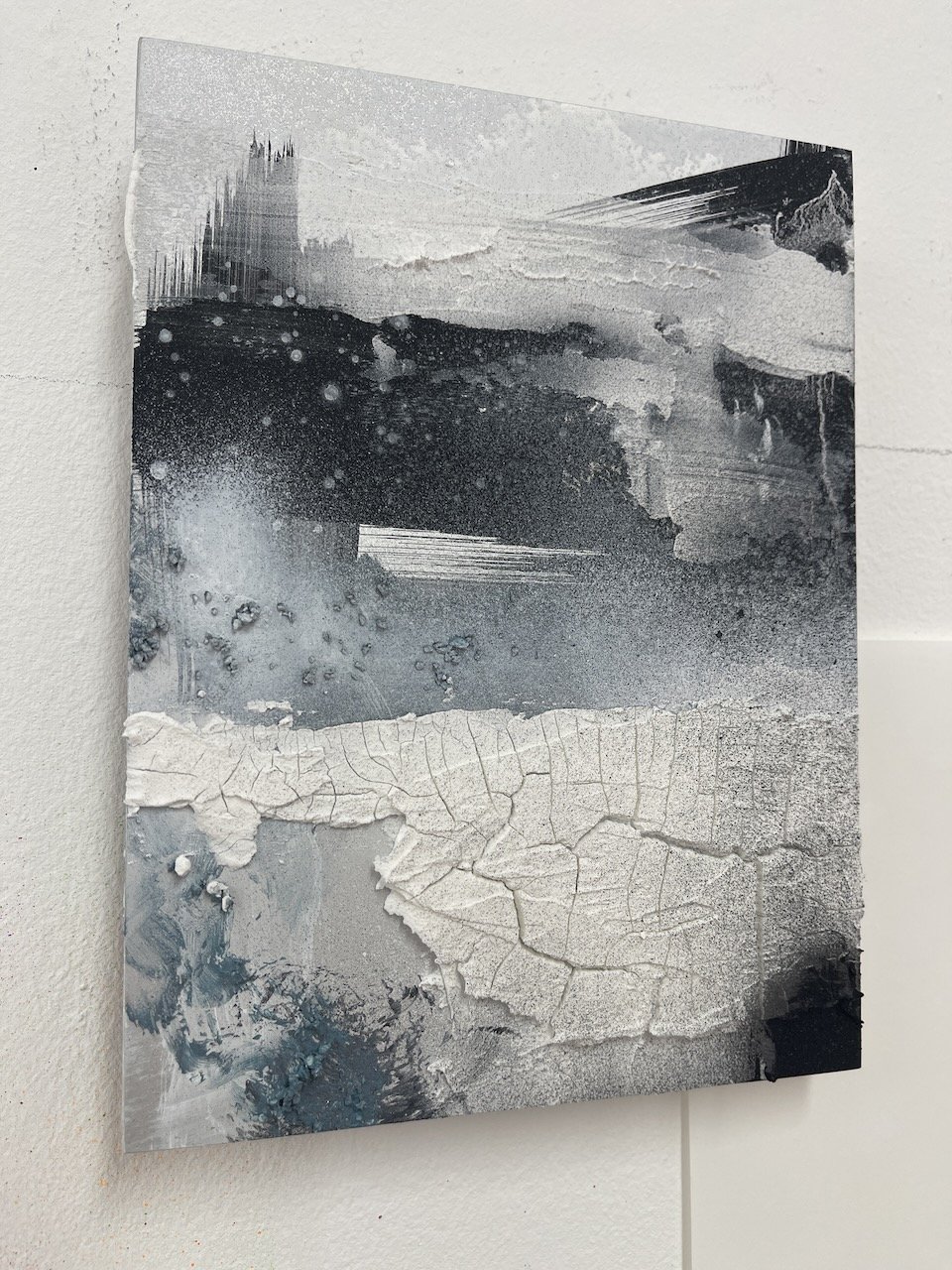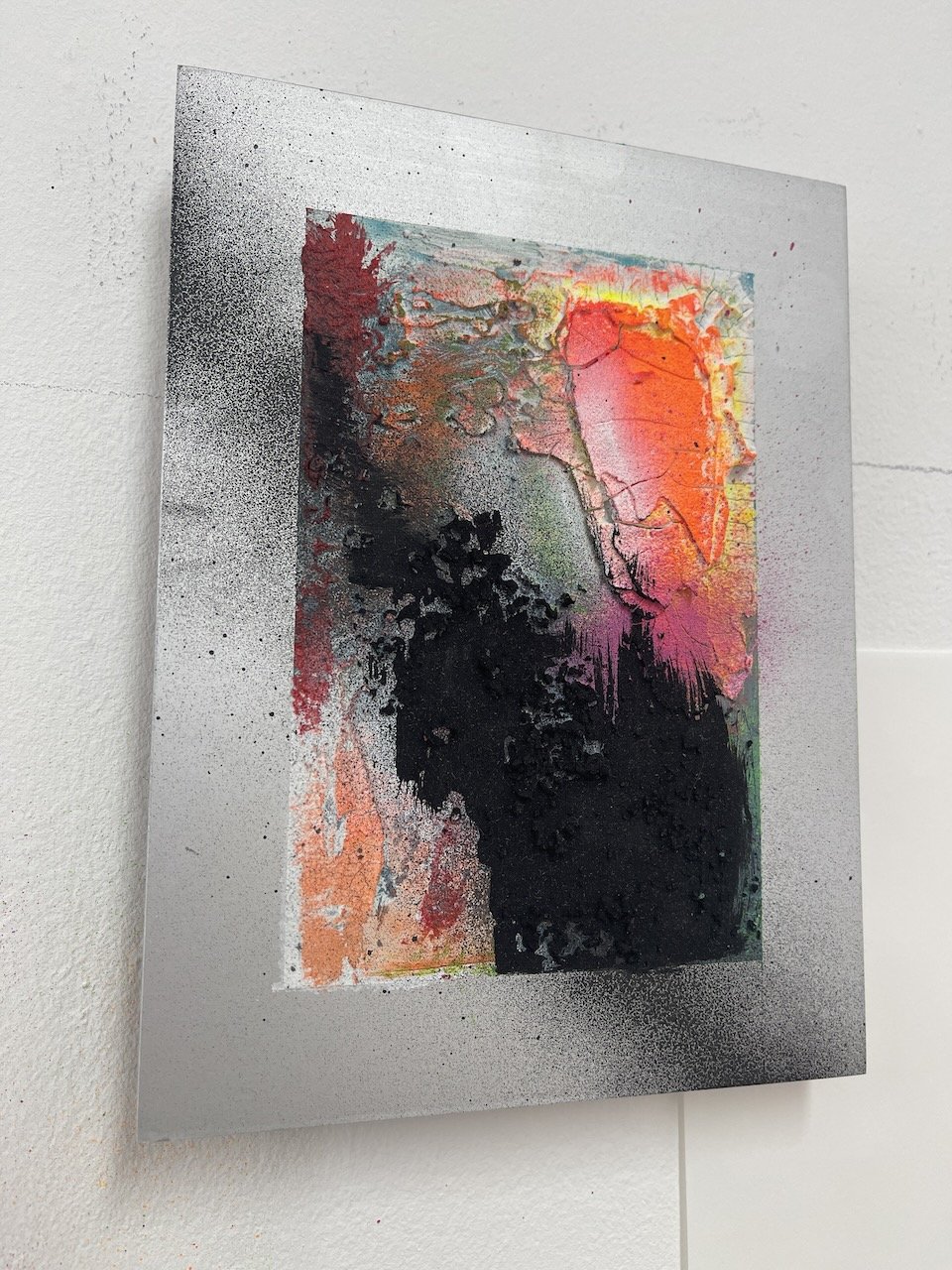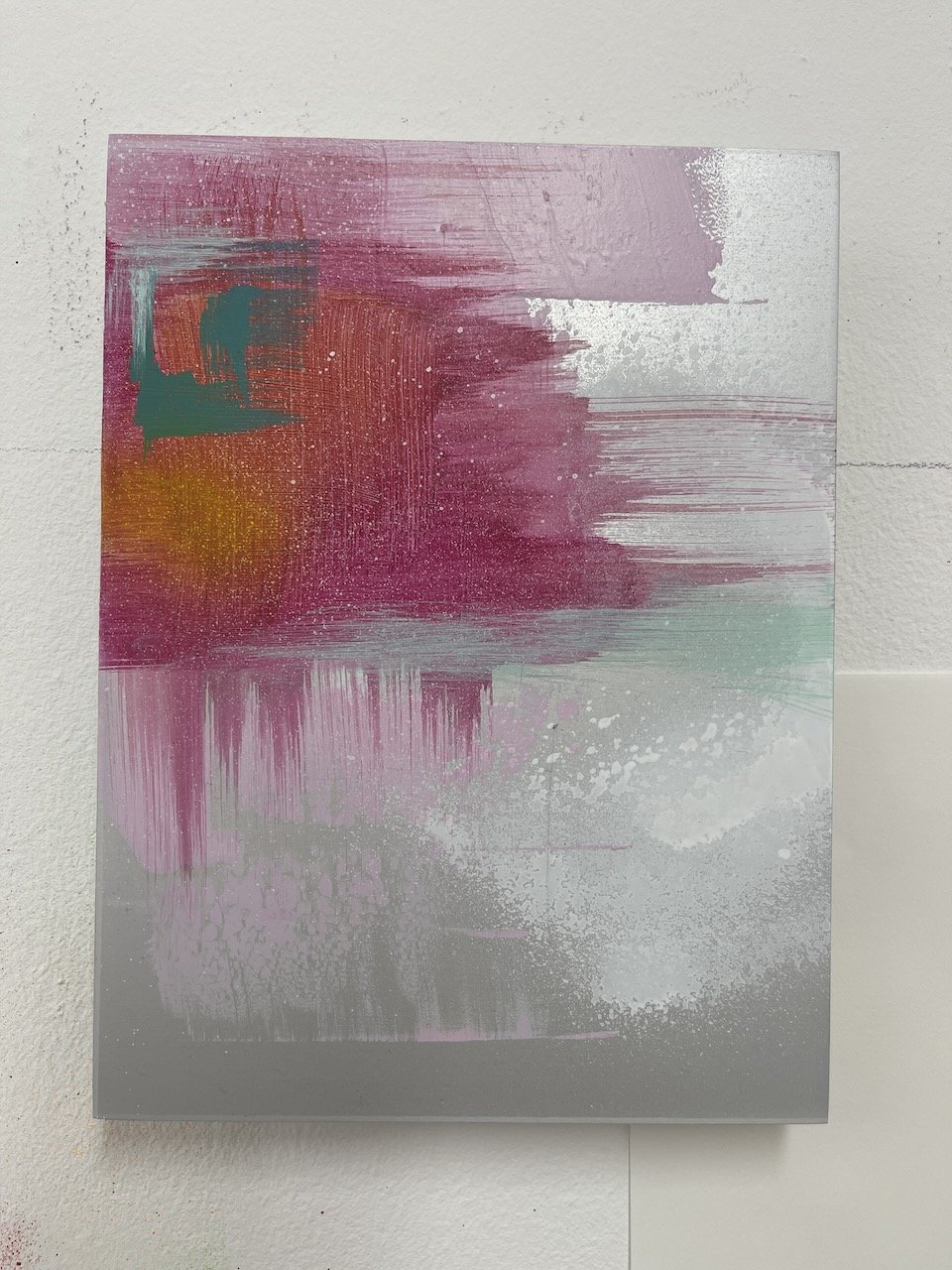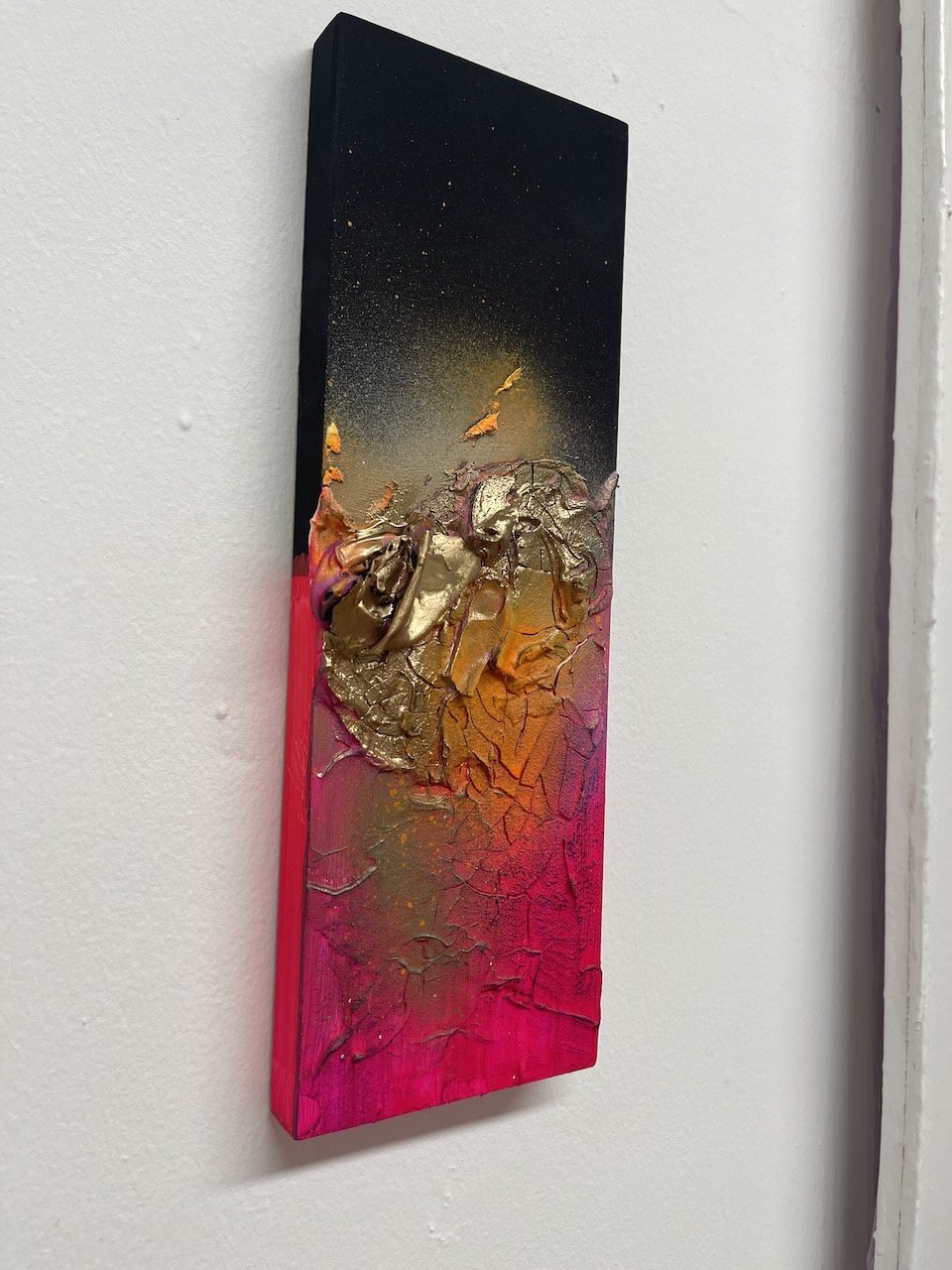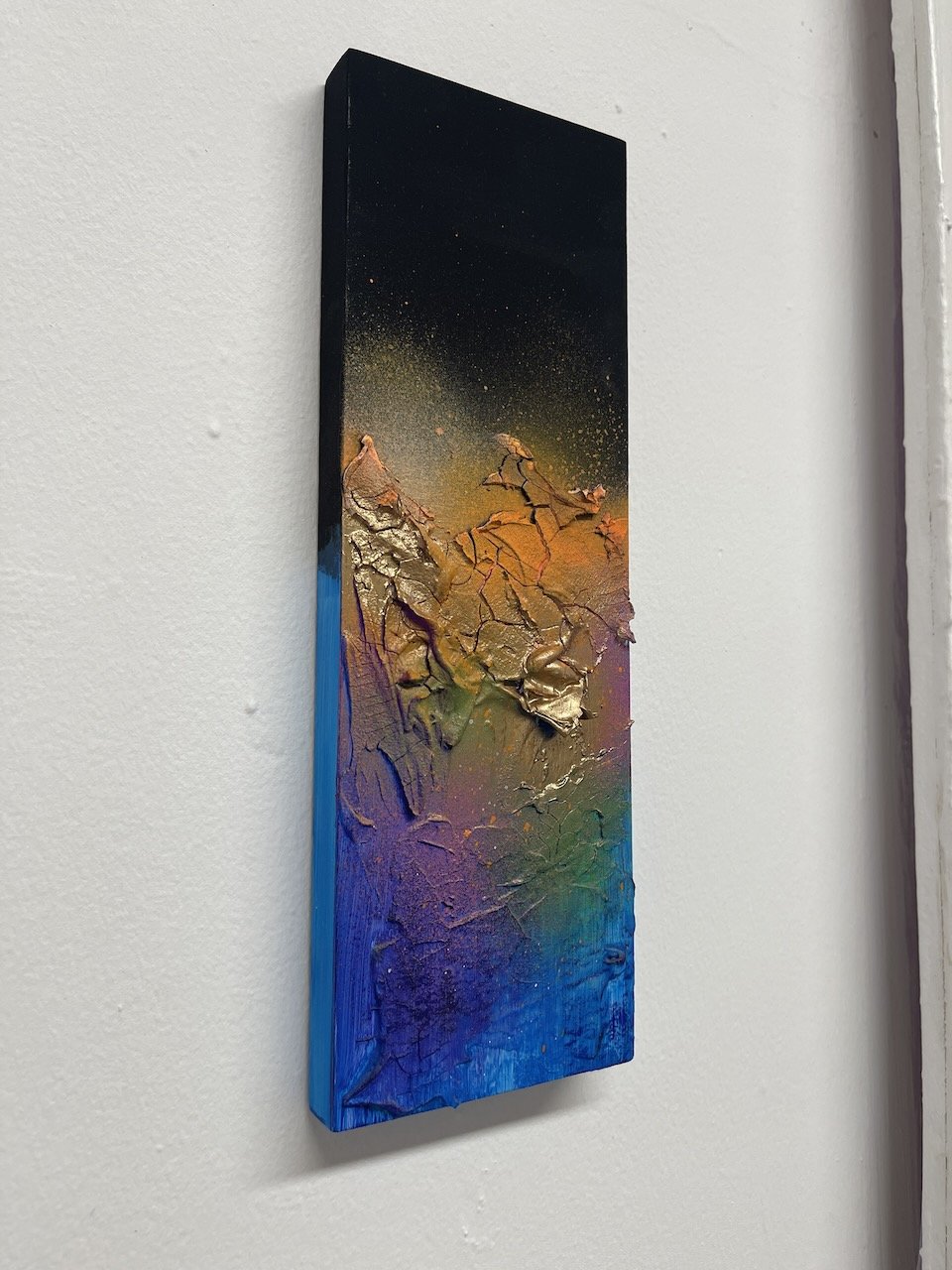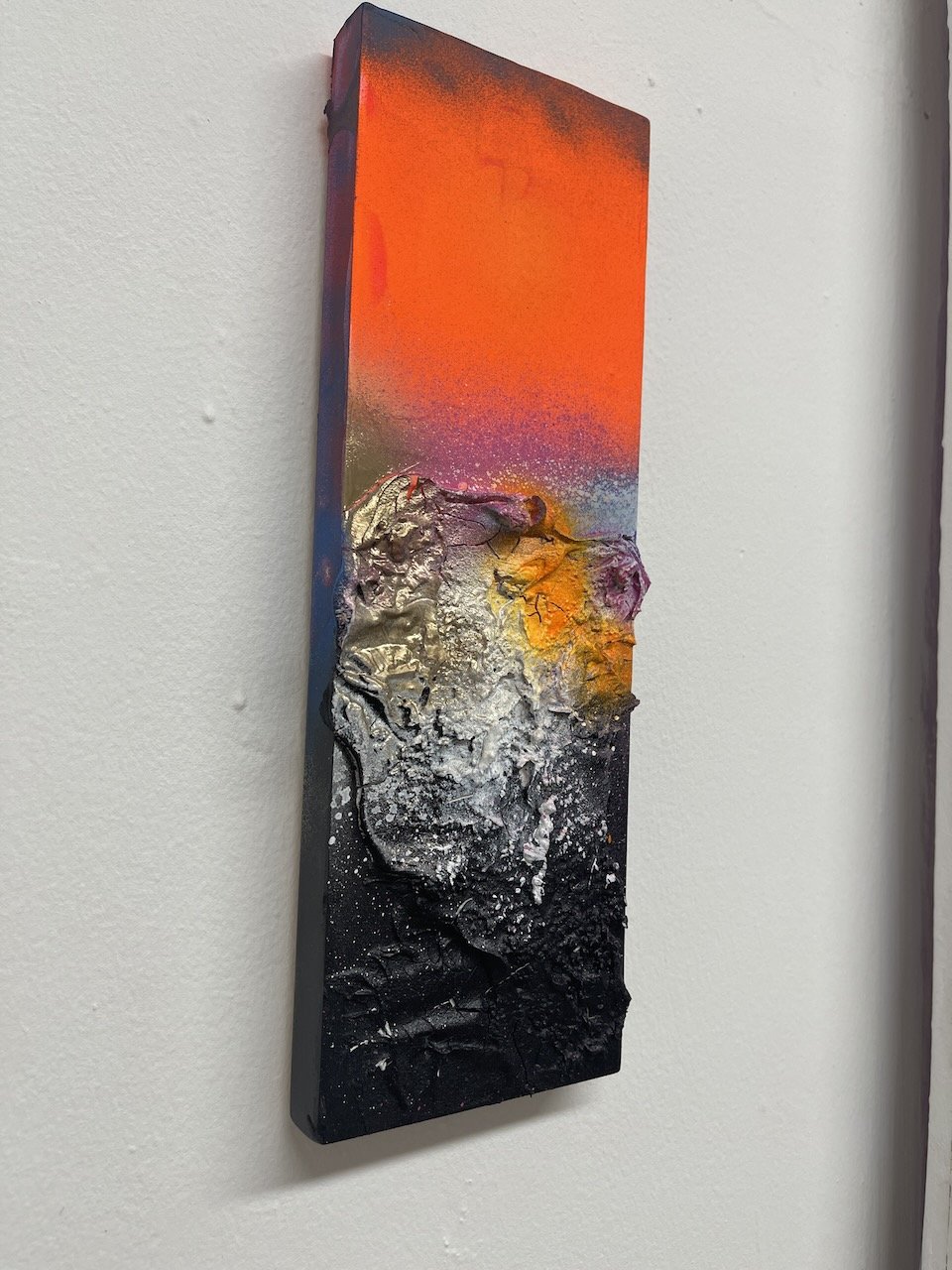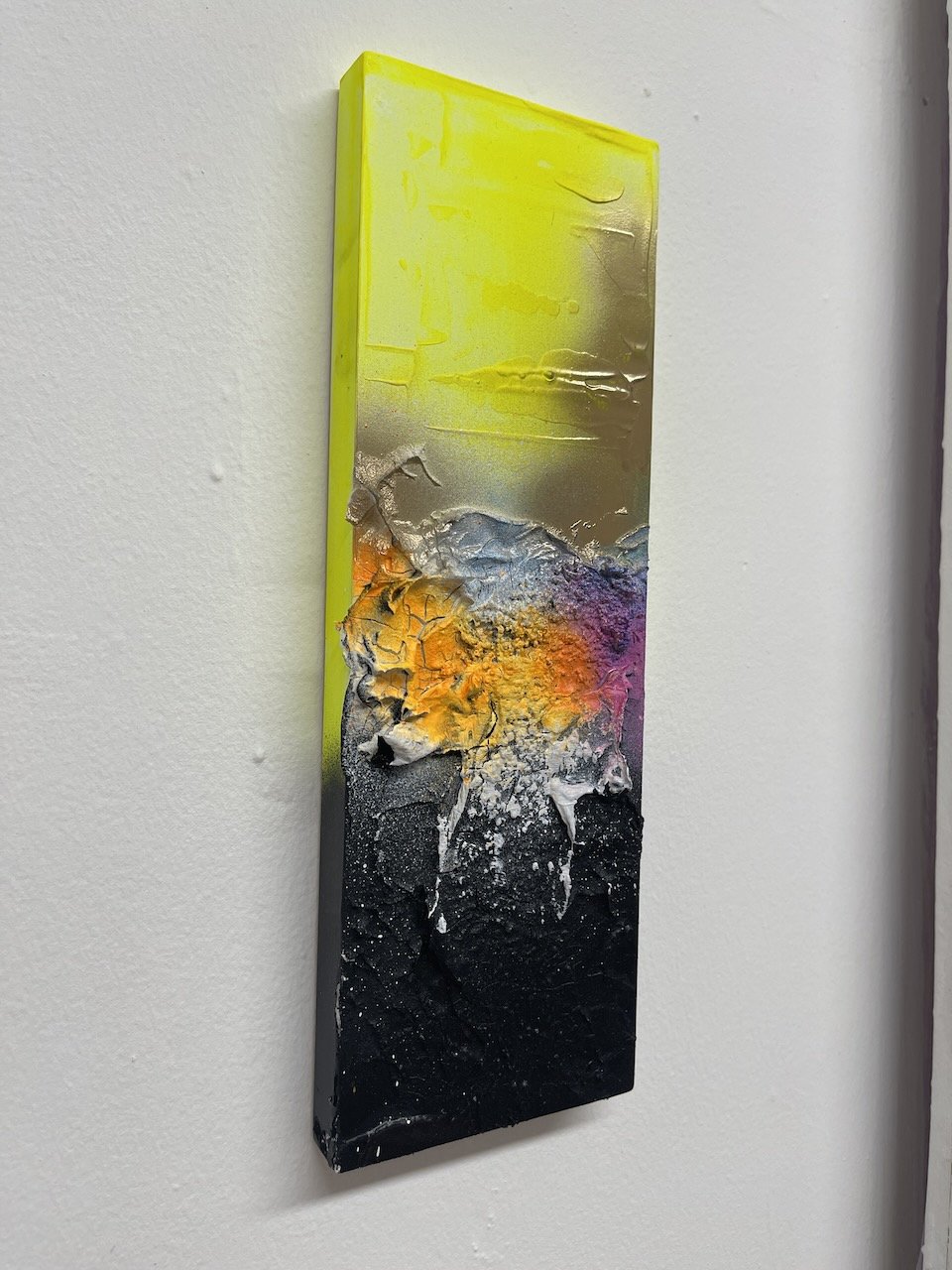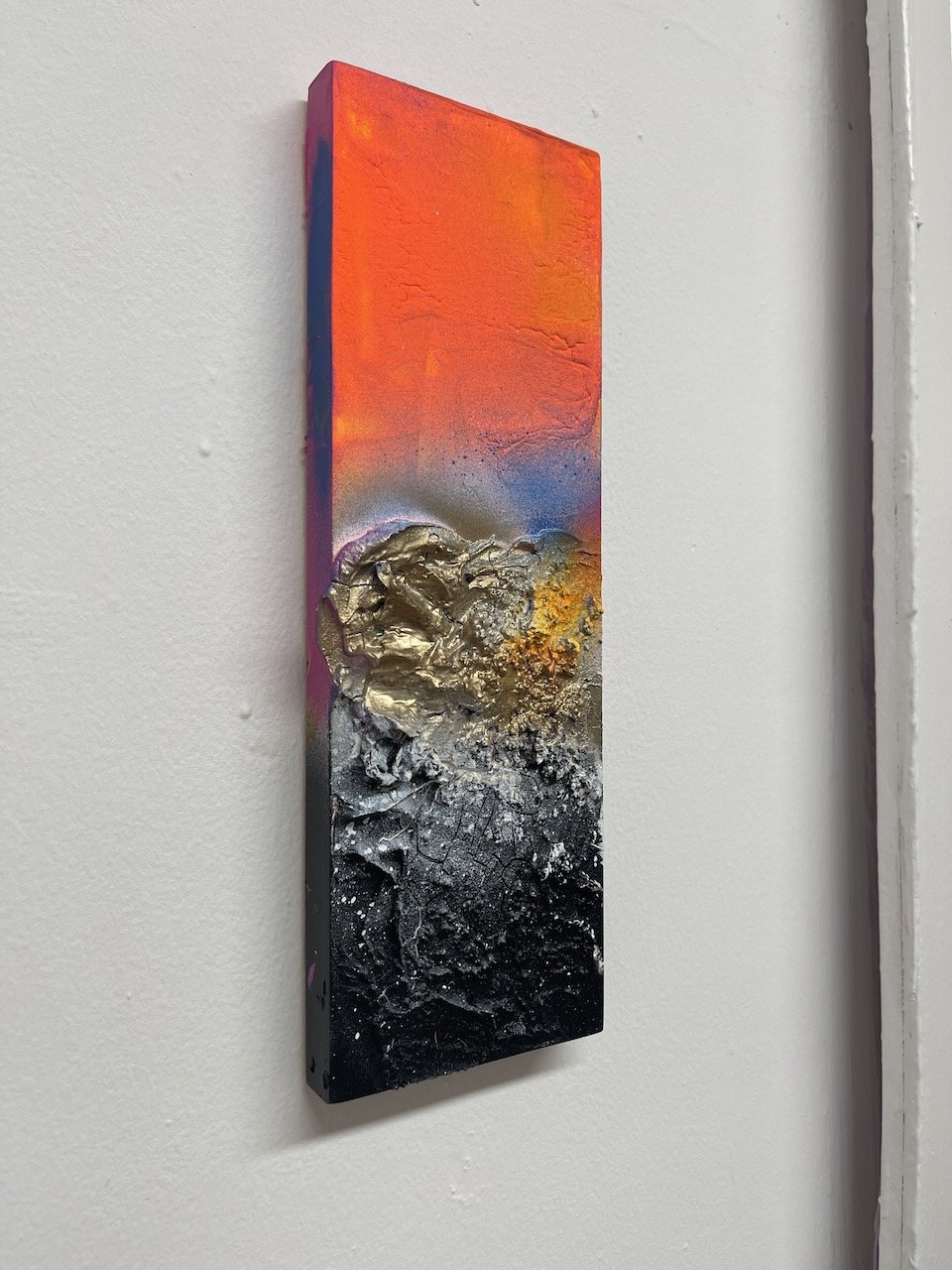The Origin of Colour
The Origin of Colour
I was so thrilled when the Scottish Chamber Orchestra had the idea to commission me to paint, Jay Capperauld’s new piece ‘The Origin of Colour’.
But let me go back to when I first heard ‘The Origin of Colour’. Jay came and visited me in my studio to see my work. We got on brilliantly and found out we both have synesthesia and lots to talk about on the subject of music and art. Jay then asked if I would like to hear a midi recording of his new piece. I leapt at the chance and the piece in turn leapt out at me.
From the first listen, even though it was a midi recording, colours were so evident to me throughout. Some pieces of music, for me, feel like they are literally ask to be painted. This was one of those. So I knew I wanted to paint it regardless of how that came about.
I was thrilled when the SCO agreed to commission the making of it. This meant I could get the materials I really wanted to use to capture what I was hearing/seeing.
When I heard the piece what immediately jumped out at me was Marvel Comics, Graphic Novels: modernity. This music is full of colour, excitement, wonder and power. It also has elements that reflect the immediacy of the comic genre. Comics have traits which are immediately recognisable and often that has led to the wrong assumption that the Art of comics must be somehow less worthy. Jay uses lots of syncopated rhythms and lots of threes against twos which have similar traits to movie themes, science fiction sound tracks but Jay - like the artists of Marvel comics - takes these traits and uses them in a sophisticated way. Your ear can never rest as this music moves with power and insistence, hurtling us towards the abrupt ending.
I think what Jay has done is genius. His piece is both familiar and new. This reflects the short story ‘The Origin of Colour’ by Calvino that Jay based his piece on. Calvino gives us a world devoid of colour which is imprisoned in a vagueness of greys or in Art terms, a world stuck in mid values. Then a meteor shoots across the sky bestowing colour to the world. But this colour whilst beautiful, is not peaceful. It is tumultuous colour, colour that hurts the eyes. The two main characters stumble from the grey into this new world of colour with one astonished by the new whilst the other is devoid of the ability to cope with the dramatic change.
I am surprised that no one has made Calvino’s stories - the collection is titled Cosmicomics! - into a graphic novel. Perhaps the writing has so much comic-type description already that it does not pose much of a challenge to be created into storyboard form.
I however am no comic-Artist and yet I felt all that drama of a comic, graphic novel, pop-Art. I wanted to reflect all of this in my work. So I ordered material that would reflect this - literally. I ordered five aluminium cradled panels 50x120cm to be made. These panels are similar in proportion to what is found in a graphic novel or comic strip and to finish off the resemblance I taped off an inch around each one to give them a border. The aluminium is modern, industrial and its reflective properties make these paintings live in a new way. When light changes so do the paintings, when you walk around the paintings they change. This man-made material makes these paintings live in a modern way.
Tidal, Undulating & Sinuous
My first challenge was the first colourless grey section. Jay uses ‘white noise’ to create this section. The Sibelius program that he used to create the midi recording does not do ‘white noise’. There was nothing for me to listen to.
What there was was my experience as a musician. I have done a lot of contemporary music over my playing career and done a fair share of ‘white noise’ playing. White Noise is the technique of making sound without pitch. For string instruments this generally means bowing on the bridge or other part of the instrument. For winds they are often asked to blow into their instruments without activating reeds, or buzzing into mouthpieces. For percussion there are infinite options as percussion is already divided into the two groups of ‘tuned’ percussion (marimba, vibraphone etc) instruments with pitch and non-tuned percussion.
Tidal: the first panel
a world without colour
So I looked at what Jay had written in the score and also read Calvino’s description and came up with the first panel. Here I used lots of acrylic mediums to create texture (one of the defining characteristics of white noise): crackle paste, modelling paste, heavy matt gel, and pumice stone paste. I also used acrylic spray paint.
I wanted to create a piece that gave the impression of being bumped around as Calvino describes his characters experience of this colourless world. I also wanted to show a journey through this landscape.
The only exception to this colourless place is the two lines, one gold and one copper. These are the two chords Jay put in this section to represent a flash of colour that happens in the female character’s eyes - a hint of the colour to come. The chords he constructed were clearly these metallic colours for me.
Driving, Volatile
Then colour is delivered to the world by a meteor and our ears are immediately thrust into an exciting pulsating world of orchestral colour.
Volatile: second panel
Colour arrives abruptly to the world
The colour that immediately sprung to mind was yellow, a corn yellow full of life and joy. Yet this colour is also pulsating and driving. I have a tool I use with acrylic which is a silicon wedge. I took this tool and attacked the surface with similar rhythmic stroke as if I was playing the notes. I wanted the texture to reflect the rhythm. You can see this in the bottom of the panel.
The explosive joy is that “splat” towards the top. For this I put the colours I was hearing on the aluminium surface and used a big stick to whack them to create that dramatic energy of flying paint. I also used florescent colours - particularly a very particular bright orange - but these don’t photograph well and so are best seen in the originals. I left some of the aluminium blank to reflect the old world underneath.
Lighter & Luminescent
The next section is full of washes of sound. Jay builds up chords that overlap and surge dynamically from soft to loud. Some are used with tremolo - a shaking of the bow on the string - or with the texture of col lego - tapping the string with the wood of the bow - whilst others are just pure sound with the bow.
Luminescent: third panel
colour washes over the world
Washes of sound, of course demanded washes of colour and Jay’s harmonies delivered those clearly to my synthetic mind. The textural delivery of some of the chords are reflected in the disintegration of the paint as it is pulled down the panel. At the bottom is the other significant part of this section where Jay has the strings in particular play descending glissandos (sliding down with the finger) as pizzicatos (plucking the strings). This brilliant effect sounds to me like fireworks whistling down through the night’s sky.
Lively, Primal and at times Agitated & Chaotic
The next section is primal, like Stravinsky’s Rite of Spring. It leaps out of the orchestra and dances. But that dance can be unpredictable and the ear is never allowed to settle for too long on one element. The reality of living with colour is a problematic one and in Calvino’s story this is especially true for the female character.
Primal: fourth panel
coming to terms with colour
This is the ‘funkiest’ of all the sections. It makes you want to move and dance. There are lots of explosions in it too - particularly using ‘Bartok Pizzicato’ where the string is pulled up and released down onto the fingerboard producing a very loud whack. I used a big stick to create this piece where I was both hitting the paint and pulling and pushing it. The bottom purple section is the part of this section which for me sounds like music from science fiction tv, otherworldly. I also applied the paint very thinly in part of this and left gaps to let the aluminium through to make the painting ‘live’ and also represent the pulling away of the two experiences of colour versus colourless.
Solitary; Calling out from an isolated place
The final section is where things really dissolve into two worlds.
Solitary: fifth panel
dissolution and end
Jay opens this section with a rhythmic pattern played on sandpaper blocks by the percussionist and above it the piccolo has a lamenting line. For me this piccolo line sounds other worldly in a science fiction way. I am still in that Marvel comic type world. The colour is there and the piccolo line is definitely pink, but it keeps getting interrupted by the colourless percussion.
I used tape to create gaps and disruptions in the surface. I also wanted to create a sense of the architecture coming apart. The result is an image that appears to swing out from itself and reminds me of an outer space existence.
Then it crashes into the vertical line. This textured line was one of those “problematic” moments in the studio. I had created bright colours and huge textures based on studies I had done on this crashing theme (see the end of this post for more info). But it just wasn’t working. So I did what all artists do (and composers too), I destroyed it and in that act of destruction it revealed itself. I added a wash of colour and the aluminium glowed back. It was what I was looking for.
The final end point is dark, and originally I had painted it black but black didn’t work. It was too cut off. The end of the story is the female character cut off from the world of colour by going into a colourless cave. But black didn’t work. I then realised when you have seen colour, you cannot un-see it. Just like how you get colour spots when you close your eyes, the abrupt sudden ending of this piece is not devoid of colour.
Studies & Investigation
These 6x4 inch aluminium pieces I used to experiment with the medium - find out how the paint would interact with the metal. They are available to buy for £50 each - email here.
These 12 by 4 inch boards I experimented with the notion of colour exploding into non-colour. They are also available to buy at £50 each - email here.







